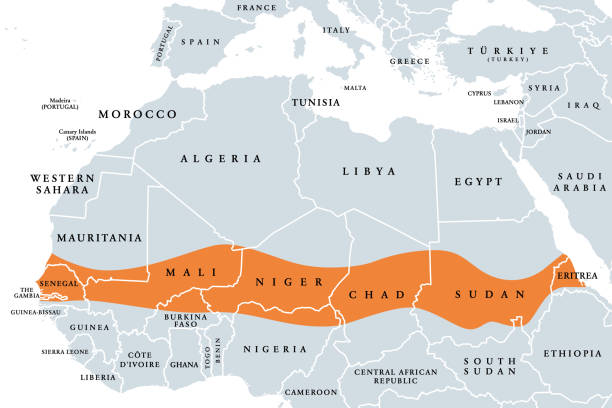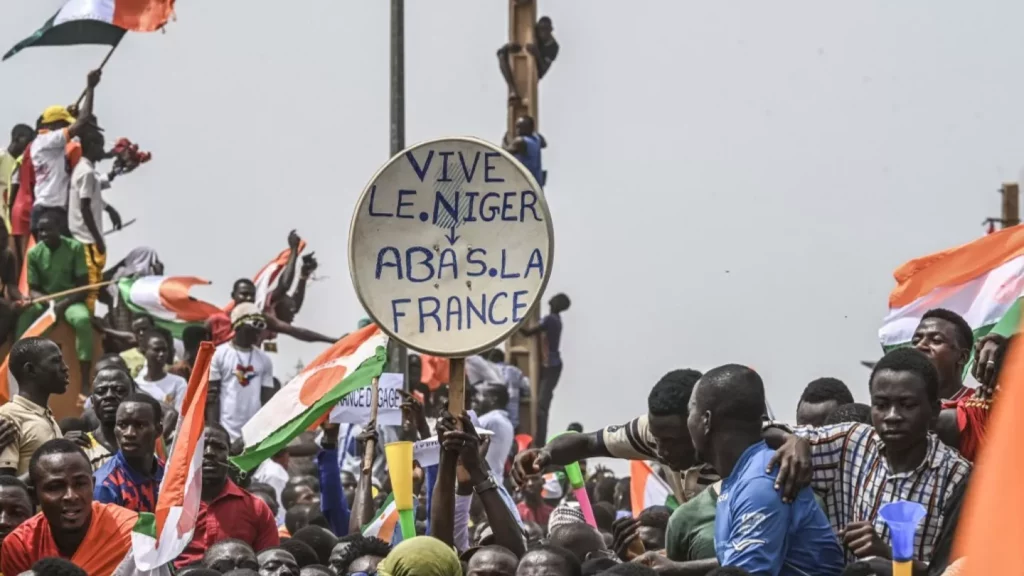The Confederation of Sahel States has born
On July 6, 2024, a pivotal date in the saga of African resistance was marked. The birth of the Confederation of Sahel States was formalized in Niamey (Niger) and represents the evolution of the 2023 Alliance of Sahel States (AES). This signals a clear indication that Mali, Niger, and Burkina Faso are ready to write a new chapter, independent from the dictates of Western powers.
The perfect storm
In recent years, the Sahel has been a theater of relentless upheaval: military coups that began in Mali in 2020 set off a domino effect, sweeping through Guinea, Burkina Faso, Niger, Chad, and Gabon. This whirlwind of events is no coincidence but the result of deep geopolitical wounds that have afflicted the region for decades. With the creation of the Confederation, the new military regimes are not merely striving to survive; they are attempting to transform the geopolitical reality of the region, asserting a sovereignty that defies the adverse winds blowing from the West.

A minefield and Gaddafi’s ghost
The Sahel is a crossroads of complex geopolitical challenges, a region where stability is a rare luxury, and the current chaos cannot be understood without reflecting on the legacy of Muammar Gaddafi. The fall of the colonel in 2011, orchestrated by a Western intervention (the USA, UK, and France, with Italy unable to oppose it to preserve its national interests) under the pretext of protecting human rights, unleashed destabilizing forces that still shake the region today. Gaddafi dreamed of a united and self-sufficient Africa, but his downfall opened the gates to anarchy, turning Libya into a breeding ground for jihadist uprisings that spread like wildfire across the Sahel.
The recent coups have deeply undermined the legitimacy of central governments, creating space for jihadist groups and rampant crime. Recent reports tell of a Tuareg rebel ambush in July 2024, which resulted in the deaths of 131 people, including 84 Russian mercenaries from the Wagner group. This is just the latest example of a seemingly unstoppable conflict. In this region, the desert terrain and porous borders are not only a logistical challenge but also a metaphor for the fluidity of power and chronic instability.
The resources of the Sahel: a contested heritage
The region is rich in natural resources, a true “gold mine” for those who control it. Niger, for example, holds one of the largest uranium reserves in the world, essential for nuclear energy. With about 7% of global uranium production, Niger is a key player in the global energy market. Mali and Burkina Faso are known for their abundant gold resources, with Mali often cited as the third-largest gold producer in Africa. In 2021, Mali produced over 63 tons of gold, a vital resource for its local economy.
These countries are also rich in oil, natural gas, and minerals such as phosphate and manganese, crucial resources for global industry. For instance, Mali possesses significant deposits of bauxite and phosphates, while Burkina Faso has large reserves of manganese. However, the control and management of these resources have long been contested, with foreign powers aiming to exploit them to their own advantage, often at the expense of local populations.
The Confederation of Sahel States represents an effort to return control of these resources to local governments, with the goal of using them for the region’s economic and social development. This move signals a shift in the balance of power, as the Sahel seeks to reclaim its wealth and chart a new course for its future, free from the exploitative dynamics of foreign influence.
The turning point: bye bye western military forces
The expulsion of foreign troops from several countries within the Confederation of Sahel States was a clear act of national sovereignty. In 2022, Mali ordered the withdrawal of French forces from Operation Barkhane, which had been present in the country since 2013. This was followed in 2023 by the ousting of U.S. troops, who had established a strategic base for counterterrorism operations. Burkina Faso, following Mali’s lead, expelled French troops at the beginning of 2023, marking the end of a long and controversial military presence.

In July 2024, Niger took similar action, expelling both French and American forces in a bold move that surprised many international observers. These courageous acts symbolize a new determination among Sahelian leaders to no longer tolerate the presence of foreign forces, which, according to the new leadership, have fueled instability rather than combating it.
The message is clear: these nations are reclaiming control of their territories and security strategies, rejecting the perceived failures of Western military interventions. This shift also highlights the growing sense of unity and purpose within the Confederation, as it seeks to chart a path toward self-reliance and regional cooperation, unburdened by external military influence.
The CFA Franc: the last chain to break
The CFA Franc (Communauté Financière Africaine), introduced in 1945 during the colonial period, continues to symbolize the deep economic dependence of many West African countries on France. Although presented as a mechanism for financial stability, the currency operates as a tool of geopolitical and economic control. The CFA Franc is used by 14 African countries, divided into two economic zones: the West African Economic and Monetary Union (WAEMU) and the Central African Economic and Monetary Community (CEMAC).

The key feature of this currency is that it is guaranteed by the French Treasury, with a fixed exchange rate to the euro. However, this guarantee comes at a high cost for the countries that adopt it: 50% of their foreign exchange reserves must be deposited with the French Treasury. In exchange, member countries give up control over their monetary policy, leaving crucial decisions, such as the management of interest rates and money supply, in the hands of France and the European Central Bank. This financial dependency prevents true economic sovereignty, as it limits the Sahel countries’ ability to use monetary policy as a tool to stimulate economic growth, combat inflation, or respond to financial crises.
The Confederation of Sahel States views the abandonment of the CFA Franc as necessary to break the chains of economic imperialism and to establish a new national currency that reflects their autonomy and is managed according to local interests rather than those of Paris. Leaving the CFA Franc represents a colossal challenge, as it means creating economic and financial structures from scratch, managing the transition to a new currency, and building the confidence of both domestic and international investors.
For the governments of the Sahel, however, this step is essential for economic self-determination and a powerful symbol of a definitive break with a colonial past that continues to cast long shadows over their independence. The creation of a national currency would not only allow these nations to regain control over monetary policy but would also serve as a cornerstone in their broader fight for political and economic autonomy, reinforcing their sovereignty in the global arena.
New partners replace the West
The Confederation is not merely a rebellion against the established order; it is also an opening toward new horizons. Russia, through the Wagner Group and its newly formed military structure, the Africa Corps, has already become a key player. Meanwhile, China, with its massive infrastructure investments, is building a bridge to the future—both figuratively and literally.
One of the most ambitious projects underway, supported by the China Railway Construction Corporation (CRCC) and the China Civil Engineering Construction Corporation (CCECC), is the construction of a trans-African railway. This line will connect the Horn of Africa, starting from the port of Djibouti, crossing Ethiopia, Sudan, Chad, and Niger, and reaching Senegal on the Atlantic coast. This railway is not just an infrastructure project; it represents a new African Silk Road, aimed at linking the continent’s resources to global markets while reducing dependence on trade routes controlled by Western powers.
The railway is expected to revolutionize the movement of goods across Africa, particularly in the Sahel region. It will provide a much-needed connection between resource-rich, landlocked countries and coastal ports, facilitating trade and economic development. The Confederation of Sahel States views this project as a critical component of its broader vision for economic independence and growth, providing a direct pathway for its natural resources, such as uranium, gold, and oil, to reach international markets without the constraints imposed by Western-controlled routes.
Moreover, this railway is emblematic of China’s growing influence in Africa. Through projects like this, China is not only securing access to critical resources but also positioning itself as a long-term partner for African nations, offering them alternatives to Western development models. The Sahel countries see this as an opportunity to reorient their economies, moving away from dependency on former colonial powers and toward a more diversified set of global relationships.
For the Confederation, this railway symbolizes more than just economic development—it represents a new chapter in the region’s history, where Africa controls its destiny, integrates its economies, and leverages its vast resources to build a future less reliant on Western influence.
Conclusion
In the face of the significant challenges on the horizon, the governments of the Sahel must act with foresight and determination. The birth of the Confederation of Sahel States is a bold step toward self-determination, but the path ahead remains fraught with obstacles. Regional destabilization, the reactive ambitions of defeated foreign powers, and competition over resources demand a strategic and coordinated response. Only through a shared vision and strong leadership can the Sahel navigate this geopolitical minefield.
The stakes are high. The Sahel’s future is crucial not only for Africa but for the broader international landscape. The region’s vast resources and strategic position make it a pivotal player in global affairs, and its ability to assert its sovereignty in the face of external pressures will set a precedent for other parts of the world grappling with similar dynamics.
The Confederation’s success will depend on maintaining unity, fostering regional cooperation, and building resilient institutions that can withstand both internal and external challenges. As new partnerships with powers like Russia and China take shape, and as the region reclaims control over its natural wealth, it will be essential for the Sahel to maintain its autonomy and prioritize the needs of its people. The journey may be difficult, but with the right approach, the Sahel could become a model for other regions striving for independence and prosperity.
We will continue to monitor these developments closely, as the future of the Sahel is not just an African issue—it holds significance for the entire international chessboard.
